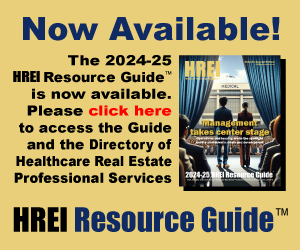Seeking transparency
NIC SPEAKER’S CHALLENGE SEEMED FAMILIAR
Dear Reader:
Earlier this month, I attended the annual conference presented by the National Investment Center for the Seniors Housing & Care Industry (NIC) in Chicago. One of my biggest “gee whiz” moments was during the keynote speech by real estate consultant Peter D. Linneman, a professor of real estate at Whartman University of Pennsylvania.
His talk focused on transparency – or the lack thereof – in the senior living sector. He explained that an industry is considered transparent if clear, consistent information is available; if borrowers and lenders share the same information; and if new investors can grasp industry fundamentals. Transparency is good because if lenders and investors understand the business, the risk premium tends to be lower.
Unfortunately, the senior living sector lacks transparency, Mr. Linneman said, which increases capital costs. Although the sector has made some strides in recent years, he said the industry still has a long way to go before it achieves the level of transparency provided by other commercial real estate sectors.
Of course, as Mr. Linneman chided the roomful of senior living professionals, I couldn’t help but think of the medical office sector. If transparency in the senior living business is “20 years behind the times,” as he contended, I shuddered to think what he would say if he analyzed the medical office building (MOB) sector.
In recent years, some real estate data services and commercial real estate firms have made strides in compiling national MOB data. And a few organizations have taken a stab at compiling at least local market information.
But in most markets, even basic information about the medical office sector still isn’t readily available – basics such as the total number of MOBs and their square footages, vacancy rates, tenant lists and lease terms, and so on. Of course, with spotty data on the local level, we can’t hope to compile any kind of meaningful national MOB statistics.
So why does the MOB sector lack transparency? It’s basic supply and demand. Someone would probably compile that data if it were profitable to do so. It would, however, be a colossal undertaking to gather such data market by market, building by building and tenant by tenant – let alone to keep it updated. There apparently just aren’t enough folks willing to pay for comprehensive MOB data to make it worthwhile for anyone to invest the time and money to compile it.
Opportunities abound in the MOB and senior living sectors. But imagine how much better they could be with greater transparency – and the lower risk premiums, more appropriate pricing and greater capital availability that would go along with it.
Murray W. Wolf, Publisher
The full content of this article is only available to paid subscribers. If you are an active subscriber, please log in. To subscribe, please click here: SUBSCRIBE





Comments are closed, but trackbacks and pingbacks are open.